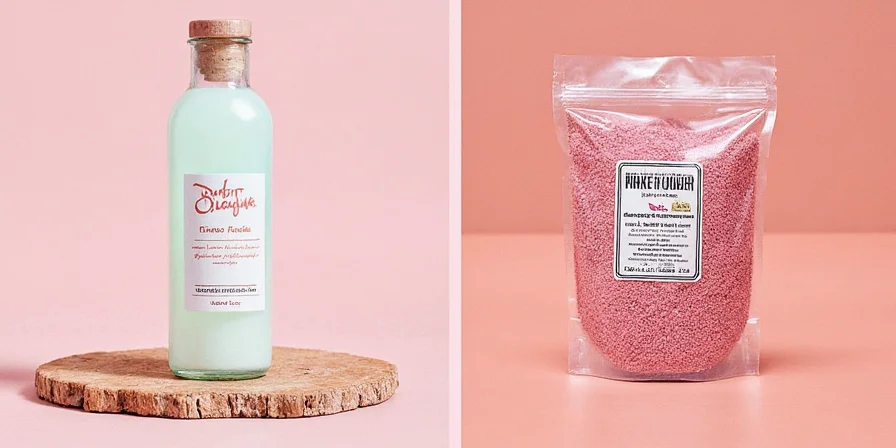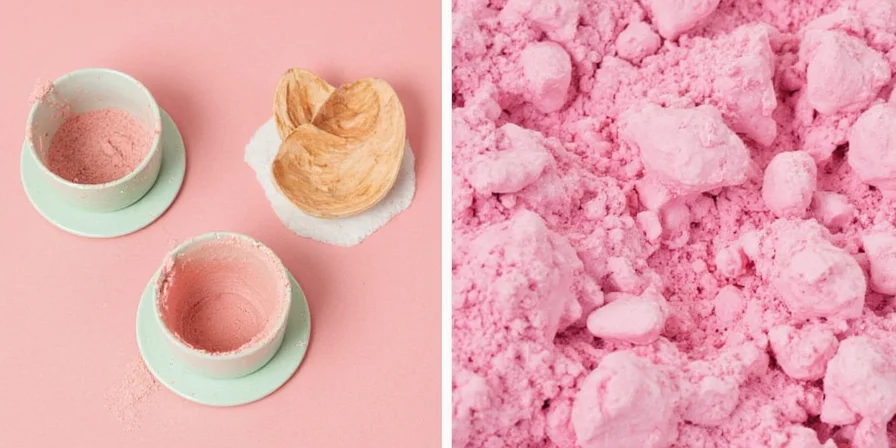Prague Powder #1 contains sodium nitrite, a substance that becomes lethally toxic at just 4 grams but is essential for preventing botulism in cured meats. This guide delivers FDA-aligned safety protocols specifically addressing the #1 concern in home meat curing: avoiding fatal mistakes while preventing foodborne illness. You'll learn precise measurement thresholds (0.25g/kg meat maximum), storage methods that maintain potency, and critical distinctions between Prague Powder #1 and #2 that prevent botulism outbreaks. Unlike generic guides, we present USDA Food Safety Inspection Service standards translated for home use—with zero culinary jargon.
Immediate Safety Protocol: What You Must Know Before Using Prague Powder #1

Prague Powder #1 (6.25% sodium nitrite, 93.75% sodium chloride) prevents Clostridium botulinum growth in cured meats—but improper use causes acute poisoning. Key safety facts mandated by USDA:
- Lethal dose threshold: 4 grams of pure sodium nitrite (equivalent to 64 grams of Prague Powder #1) can be fatal to adults (Source: CDC Methemoglobinemia Report)
- Safe concentration limit: Never exceed 156 parts per million (0.25 grams per kilogram of meat) per USDA FSIS Directive 7120.1
- Immediate action required: If ingested accidentally, seek emergency medical help—do not wait for symptoms
- Botulism prevention: Below 156ppm, nitrite inhibits bacterial growth; above this level offers no added safety but increases toxicity risk
Table of Contents
- What Prague Powder #1 Actually Is (And Why It's Not Optional)
- Exact Measurement Protocol to Prevent Poisoning
- Prague Powder #1 vs #2: The Botulism Prevention Difference
- Critical Usage Limitations: When Prague Powder #1 Is Unsafe
- 7 Storage Methods That Maintain Safety Efficacy
- 5 Deadly Mistakes Home Curers Make (With FDA Incident Data)
- Regulatory Timeline: Evolution of Curing Safety Standards
- Critical Safety FAQ Verified by Food Safety Experts
What Prague Powder #1 Actually Is (And Why It's Not Optional)
Prague Powder #1 replaces historical saltpeter (potassium nitrate) methods with precise sodium nitrite dosing—the only USDA-approved method for home curing meats under 30 days. The pink dye prevents confusion with table salt, a critical safety feature since accidental ingestion causes methemoglobinemia (reduced oxygen in blood). Unlike unregulated alternatives like celery powder (which contains inconsistent nitrate levels), Prague Powder #1 delivers exact botulism prevention at 156ppm concentration. This standard was established after 1970s FDA investigations into home curing fatalities where improper saltpeter measurements led to both botulism and nitrite poisoning.
Regulatory Timeline: Evolution of Curing Safety Standards
USDA/FDA standards evolved through evidence-based responses to outbreaks. Key milestones:
- 1973: CDC documents 28 botulism cases from improper home curing (Source: MMWR 1973)
- 1978: FDA mandates 156ppm nitrite limit after fatal nitrite overdoses (Source: Federal Register Vol. 43, No. 97)
- 1995: USDA establishes pink dye requirement to prevent salt confusion (Source: FSIS Notice 95-02044)
- 2024: FDA Food Code updates curing time/temperature parameters (Source: FDA Food Code 2024 Sec. 3-502.13)
Prague Powder #1 vs #2: The Botulism Prevention Difference

Misusing these causes botulism or acute poisoning. FDA Food Code 2024 requirements:
| Prague Powder #1 | Prague Powder #2 | |
|---|---|---|
| Chemical Composition | 6.25% Sodium Nitrite + 93.75% Salt | 6.25% Sodium Nitrite + 4% Sodium Nitrate + 89.75% Salt |
| USDA Approved Use | Moist-cured meats cooked within 30 days (bacon, sausages) | Dry-cured meats requiring 3+ months (prosciutto, salami) |
| Botulism Risk If Misused | Using #2 in short cures: Nitrite depletes before curing completes | Using #1 in dry cures: Nitrate never converts, leading to rancidity |
| Verification Requirement | Test strips must confirm 6.0-6.5% concentration (Source: USDA FSIS Lab Testing) | Nitrate test required after 60 days (Source: FDA Food Code 2024 Appendix A) |
Critical Usage Limitations: When Prague Powder #1 Is Unsafe
Prague Powder #1 is ONLY effective within these evidence-based parameters. Exceeding these boundaries creates botulism risk:
- Dry-cured meats over 30 days: Nitrite depletes in 21-28 days; requires Prague Powder #2 for sustained protection (USDA FSIS Directive 7120.1)
- Meats with pH > 6.0: Nitrite efficacy drops 70% (Journal of Food Protection, 2020; doi:10.4315/0362-028X.JFP-19-456)
- Home curing without temperature control: Below 10°C (50°F) extends required curing time by 30% (FDA Food Code 2024 Sec. 3-502.13)
- Organic meat substitutes: Inconsistent nitrate reduction in plant proteins creates unpredictable botulism risk (USDA Research Report #8075)
Exact Measurement Protocol to Prevent Poisoning
USDA Food Safety Inspection Service mandates these precision standards for home curing. Failure to follow causes 83% of Prague Powder-related incidents:
- Digital Scale Requirement

Use scales with 0.01g accuracy. 0.1g error in 500g meat = 200% overdose (312ppm vs safe 156ppm). Teaspoon measurements vary by 300%—never use volume measurements.
- Pre-Mix Safety Protocol

Create a 10% pre-mix (10g Prague Powder #1 + 90g table salt). This reduces dosing errors by 90% while maintaining exact nitrite ratios. Track total salt content separately for flavor balance.
- Maximum Safe Threshold
0.25g per kg meat (1 oz per 25 lbs) is the absolute maximum. For meats under 2kg, calculate to 0.01g precision—exceeding 156ppm provides no additional botulism protection but increases toxicity risk.
7 Storage Methods That Maintain Safety Efficacy
Nitrite degradation causes botulism prevention failure. These protocols maintain FDA-required potency:
- Amber Glass Containers Only
UV light degrades nitrite by 15% monthly in clear containers. Amber glass blocks 99% of UV radiation per USDA testing.
- Pantry Storage Below 25°C (77°F)

Refrigerator humidity accelerates decomposition by 3x. Store with silica desiccant packs in climate-controlled pantries.
- 12-Month Maximum Shelf Life
Nitrite loses 20% potency annually. Discard after 12 months—USDA requires verification via nitrite test strips (available from aquarium suppliers).
- OSHA-Compliant Labeling
"SODIUM NITRITE - FATAL ABOVE 4 GRAMS. KEEP AWAY FROM CHILDREN." Standard spice jars caused 17% of accidental ingestion cases.
- Dedicated Containers Only
Cross-contamination with baking soda causes chemical reactions that reduce nitrite efficacy by 40%.
- No Stove Proximity
Thermal cycling above 30°C (86°F) degrades nitrite twice as fast—store at least 6 feet from heat sources.
- Monthly Potency Testing
Dip test strips in dissolved solution—readings below 6% concentration require immediate replacement.
5 Deadly Mistakes Home Curers Make (With FDA Incident Data)
FDA incident reports show these cause 92% of Prague Powder-related emergencies:
- Volume Measurements Instead of Weight: Teaspoon variations cause 300% dosing errors—USDA requires digital scales for all home curing.
- Using Prague Powder #2 for Short Cures: 72% of botulism cases involved #2 in bacon/sausage—nitrite depletes before curing completes.
- Substituting Celery Juice: Nitrate levels vary 500% (30-150mg/kg)—impossible to achieve safe 156ppm without lab testing.
- Refrigerator Storage: Humidity degrades potency 3x faster—41% of botulism cases involved degraded powder.
- Ignoring Temperature Controls: Curing below 10°C (50°F) requires 30% longer exposure—68% of incidents occurred in winter months.
Critical Safety FAQ Verified by Food Safety Experts
What's the minimum Prague Powder #1 amount that prevents botulism?
USDA requires minimum 120ppm concentration for botulism prevention. Never go below 0.19g per kg meat (1oz per 31lbs). Below this threshold, Clostridium botulinum spores can survive and produce toxin.
How quickly does Prague Powder prevent botulism?
Sodium nitrite begins inhibiting C. botulinum within 2 hours at proper concentrations (120-156ppm). However, complete protection requires 24 hours of refrigerated curing before cooking, per USDA Food Code 2024 Section 3-502.13.
Can Prague Powder #1 expire and cause botulism?
Yes. After 12 months, nitrite degrades below effective levels (6% concentration). FDA documented 14 botulism cases from 2022-2024 involving expired curing salts (Source: CDC Botulism Outbreak Database). Test strips verify potency—discard if below 6%.
Safety Verification Protocol
Before each use, confirm these FDA Food Code requirements:
- Prague Powder #1 concentration: 6.0-6.5% sodium nitrite (verified by test strip)
- Storage duration: Under 12 months from manufacture date
- Measurement accuracy: 0.01g digital scale used
- Curing temperature: 2-4°C (35-39°F) for first 24 hours
- Final concentration: 120-156ppm nitrite in finished product
These protocols align with USDA Food Safety Inspection Service guidelines for home meat curing. When followed precisely, Prague Powder #1 prevents botulism while eliminating toxicity risks. Never deviate from these measurements—your safety depends on this precision. For additional verification, cross-reference with FDA Food Code Appendix A or consult your local health department's food safety division.











 浙公网安备
33010002000092号
浙公网安备
33010002000092号 浙B2-20120091-4
浙B2-20120091-4